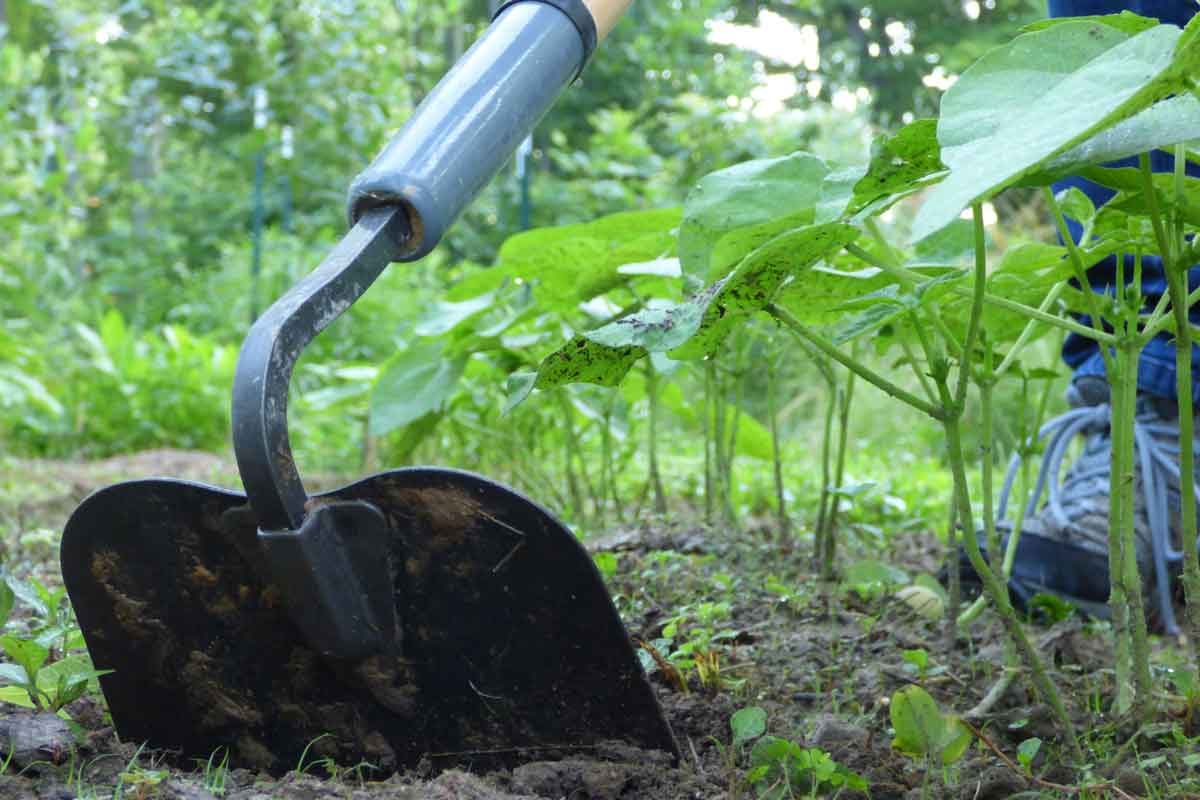Since humankind moved from hunting and gathering to an agricultural society, we’ve been using rudimentary hoe-like implements to ease the labor of growing plants from seed. Over the millennia, this one-size-fits-all garden tool evolved into a set of specialized hoes, each with a specific function.
“Like any garden tool, it’s important to get the right one for the right job,” says Katie Dubow, gardening expert and president of Garden Media Group.
Here’s a quick guide to help you choose the perfect garden hoe.
What Is a Garden Hoe?
An essential gardening tool, a hoe is a long-handled tool with a thin metal blade used to work the soil, either in the ground or in raised beds. Hoes can be used to:
- Break up soil clumps;
- Turn hard soil so it can be cultivated;
- Move soil to form furrows;
- Dig individual holes for planting;
- Spread soil over newly planted seeds;
- Uproot weeds.
How To Choose the Best Garden Hoe
According to Dubow, there are four main factors to choosing the best garden hoe. Be sure your tool is:
- Made of high-quality materials to withstand the outdoors;
- Suited to your height if the handle is not adjustable;
- Fitted with a sturdy grip for comfortable use;
- Well-made, with the blade securely attached to the handle. (This is the point where there is the most stress on the tool and where it’s most likely to break.)
How To Use a Garden Hoe
Tilling or weeding with a hoe can be one of the most labor-intensive gardening chores. Here are a few tips to make it easier:
-
Use your garden hoe when the soil is dry. If it’s too wet, you can’t properly direct the dirt.
-
Maintain a comfortable upright posture so you don’t strain your back.
-
Wear gardening gloves to ward off blisters.
-
Use fluid, sweeping motions for best results.
-
Clean the blade after each use, sharpen the tool when necessary, and store it indoors to prolong its life. Also: “Keep wooden handles away from chewing dogs — said from experience,” Dubow says.
Types of Garden Hoes
Deciding which garden hoe best fits a certain task can be confusing for a beginning gardener. “But they all fit into just a few categories — drawing, reciprocal, sweeping, digging and flat,” Dubow says. Each serves a different purpose, so gardeners should have at least one of each category. A well-rounded collection lets you tackle an array of gardening chores.
Here are the main types to keep in your tool shed:
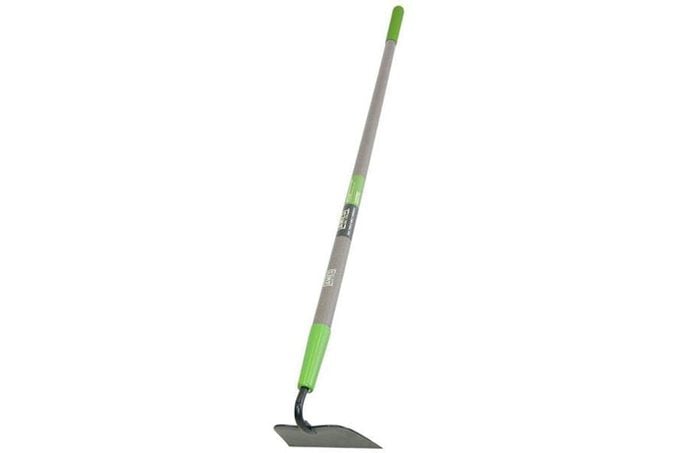 via homedepot.com
via homedepot.com
Paddle Hoe
The most common type, the paddle hoe fits into the drawing hoe category because it’s primarily used to pull, mound, shape or otherwise draw soil, according to Dubow.
An all-purpose gardening tool, the paddle hoe can also be used to dig up weeds at the root. It has a rectangular paddle set at a right angle at the bottom of a long handle — the classic shape most people imagine when picturing a hoe. You can also get handheld versions with smaller paddles for planters or tight spaces.
Other draw-type hoes: American Standard, Draw, Pattern and Gooseneck.
Shop Now
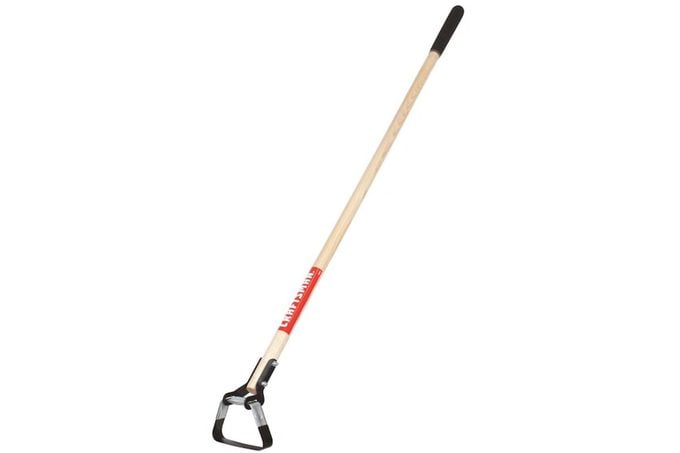 via lowes.com
via lowes.com
Scuffle Hoe
Also known as stirrup, hula and loop hoes, scuffle hoes are part of the reciprocal hoe category, which can be used in two directions. The attachment resembles a saddle stirrup or an open loop, designed to skim just below the surface of the soil.
Used with a back-and-forth motion, the double-edged attachment can dislodge or cut weeds without actually displacing the soil. Some stirrup hoes have a hinged attachment that changes the angle slightly during the push-pull action to maximize its effectiveness.
Other reciprocal-type hoes: Oscillating and Action.
Shop Now
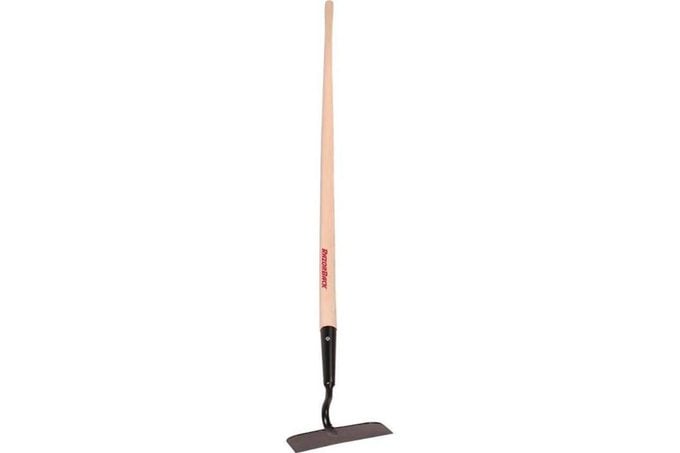 via homedepot.com
via homedepot.com
Collinear Hoe
The most modern type is the collinear hoe, part of the sweeping hoe family, according to Dubow. “This hoe features a long and thin paddle that rides parallel to the surface of the soil,” Dubow says. “It’s designed to work in narrow spaces and used in the same manner as the paddle hoe — in a chopping and pulling motion — but with the handle held fairly upright.”
Like the scuffle hoe, the collinear hoe works near the surface of loose soil for shallow cultivation and severing weeds from their roots.
Other sweeping-type hoes: Upright, Coleman and Swage.
Shop Now
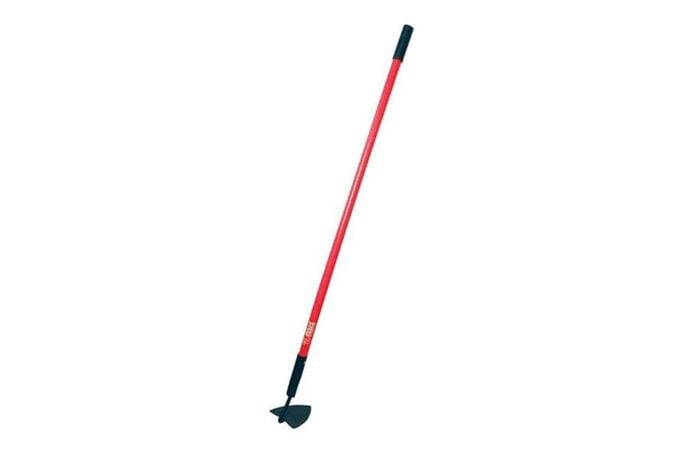 via homedepot.com
via homedepot.com
Warren Hoe
The warren hoe, with its pointed head, is one of the most common in the digging hoe category. Digging hoes have a flat triangle or narrow square blade attached at a 90 degree angle. “The pointy end of the blade is used to get into tight spaces, dig out difficult weeds or create long straight furrows,” Dubow says.
Other digging-type hoes: Grub, Field, Ridging, Pointed, Korean Ho-Mi.
Shop Now
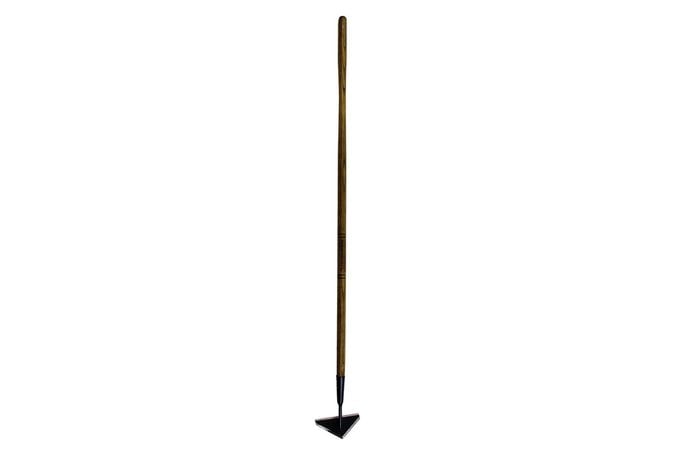 via walmart.com
via walmart.com
Push Hoe
The push hoe belongs to the family of flat hoes whose blades lay flat on the ground, working parallel to the soil surface. “[They] work to till the soil just under the surface and can cut or uproot small weeds,” Dubow says. “They are not suited for digging or drawing.”
Other push-type hoes: Speed, Heart, Diamond.
Shop Now
ⓘ




















